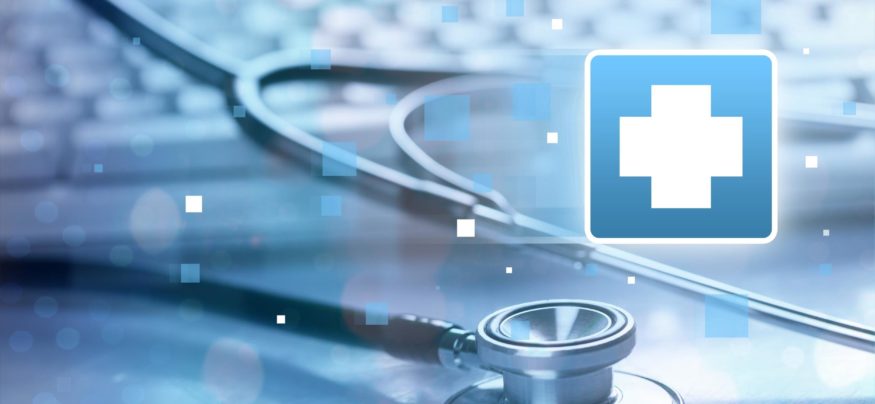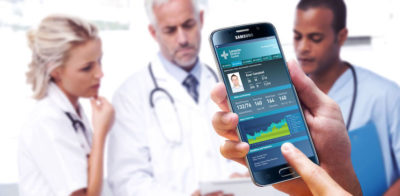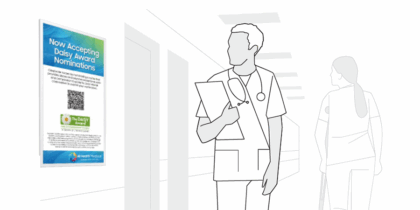In this News Insight from HIT Consultant, Arman Samani from AdvancedMD looks at how automation and integration are set to change clinical workflows. As healthcare providers embrace mobile applications, the security of patient information is paramount. Read our guide on ensuring the security of healthcare apps. —Samsung Insights editorial team
In the history of healthcare information technology (HIT), there is clear evidence that technology systems have been designed to provide individual solutions, instead of considering a provider’s workflow holistically. In the late 1980’s and early 1990’s, practice management (PM) systems offered medical practices the opportunity to automate their day-to-day operations. Then the electronic health record (EHR) became mainstream in the late 1990’s and early 2000’s, to electronically store patient health information in a single location. Meaningful use pushed the concept of EHR further, but unfortunately, EHR was not connected to back-office PM systems, preventing data flow. EHRs were adopted to allow physicians to document care they provide as required by the constantly changing regulations, with no consideration of workflow optimization. Next came patient engagement products, also created separately from both PM and EHR, adding another disconnected layer of technology for practices to manage.
Breaking down the technology silos
Over the years, I have seen how a lack of integrated HIT workflow has increased frustration for independent medical practices and their patients. It’s tough for providers to be productive, retain patients and grow their revenue when they’ve had to rely on technology that was neither fully integrated within the office workflow nor designed with their needs in mind. Many practices still manually enter data into multiple applications, and I’ve heard their complaints about wasted time and the increased risk of human error.
This situation isn’t necessarily the fault of the providers. I’ve encountered many medical practices that have tried to make better use of technology, only to be stuck with cookie-cutter templates, unable to customize notes based on their practice size or specialty, and little or no training on the new systems. The result? Practices are underutilizing healthcare technology, impacting their ability to provide coordinated, efficient care. And on the business side, there is often little or no return on their technology investment.
What providers need is complete automation of everything that could be automated in clinical, patient and billing systems. When providers don’t need to spend so much time documenting what they have done for regulatory and billing purposes, they can increase their time with patients. Reduced time spent on signing-in to separate platform units also increases the office non-clinical staff’s efficiency. In the end, both practices and patients benefit.
1. Shortened receivables cycles help the bottom line
Integrated systems can also disrupt the HIT status quo when it comes to the business side of a medical practice. Using a central billing office approach tied to other systems, multi-provider practices can simplify billing tasks, and increase their overall control of billing and collections operations. OOA administrator Amanda Foutch says that an integrated accounts receivable module has enabled the practice to change the way in which its billing is done for the better. “Charges are turned over to our patient balances more quickly, and we now have a checklist that makes us more accountable,” Ms. Foutch points out. “Accounts receivable days have gone down from 45-to-50 days to the 30s.”
Securing Healthcare Apps
Download this free guide on mobile security in healthcare. Download Now
2. Patient empowerment takes center stage in tech design
Yet another way a unified workflow approach changes the traditional HIT mindset is by focusing on the patient. With the increasing consumerism of healthcare decision-making, patients are demanding an automated, coordinated process for all interactions with their provider(s) that takes advantage of the technologies they use every day, including mobile phones and tablets.
Integrated patient engagement solutions empower patients along the continuum of their healthcare experience, pre-visit to post-visit, with features such as self-scheduling, online access to consent forms and personal information, and communications with their providers via a user-friendly patient portal. And by engaging patients with this end-to-end lifecycle approach, practices can increase patient satisfaction rates, patient retention and referrals.
For example, online patient scheduling systems are gaining traction as a way to help providers improve their patients’ interaction with the practice.
“We wanted something that was easy to use for the patients and staff, straightforward, less expensive than our current solution, available to all our providers, and that would offer greater transparency to patients, particularly on which insurances we take,” notes Jared Boundy, MHA, director of operations for Washington-based Dermatology Arts. “We also felt that it needed to integrate with the other systems we already had in place. It had to be adaptable, too, as we didn’t want to pay an arm and a leg every time we added a provider or a location.”
3. Disruptive technologies are necessary to move forward
Consumerism, regulatory pressures and structural shifts in healthcare are necessitating the implementation of these disruptive technologies. The HIT status quo will no longer suffice, for patients or practices. In eliminating the siloed approach of traditional practice software by fully integrating cloud-based scheduling, smart charting, billing, flexible reporting and easy-to-use patient relationship management tools, medical practices are successfully providing value-based healthcare on any device from any location. And this is just the beginning of where the new “disruption” will take them.
Arman Samani is the Chief Technology & Product Officer of AdvancedMD, a provider of cloud-based solutions for independent medical practices based in South Jordan, Utah.
This article was written by Chief Technology Officer of AdvancedMD and Arman Samani from HIT Consultant and was legally licensed through the NewsCred publisher network. Please direct all licensing questions to legal@newscred.com.
As healthcare providers embrace mobile applications, the security of patient information is paramount. Read out guide on ensuring the security of healthcare apps.
![]()








